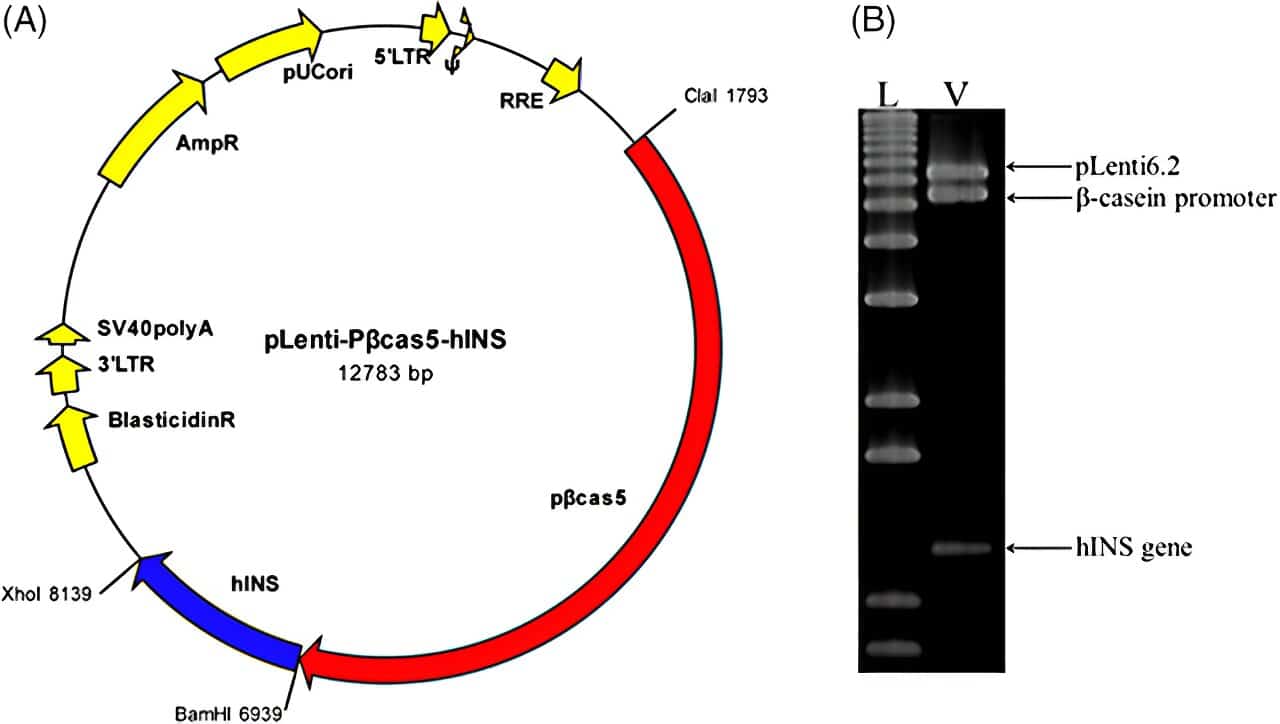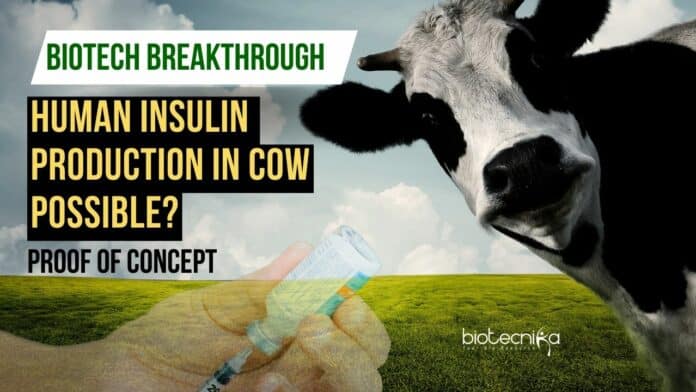Producing Human Insulin in Cow’s Milk: Breakthrough in Biotechnology
A path-breaking study has demonstrated the feasibility of producing human insulin in cow’s milk, potentially revolutionizing the insulin production industry and addressing supply scarcity issues and high costs for individuals with diabetes. This innovative approach could lead to a more sustainable and cost-effective method of insulin production, led by researchers from the University of Illinois Urbana-Champaign and the Universidade de São Paulo. Let’s dive into the details of this remarkable advancement in biotechnology.
Harnessing Nature’s Efficiency
Nature has inherently designed the mammary gland as a highly efficient protein production factory. Leveraging this natural system, researchers sought to utilize cows as biofactories for producing human insulin. Matt Wheeler, a professor at the University of Illinois, Overlooked this study, aiming leverage the potential of cow’s milk as a source of insulin on a large scale.
The Genetic Engineering Process: From DNA Insertion to Milk Production
In this study, a segment of human DNA responsible for encoding proinsulin—a precursor to active insulin—was introduced into the cell nuclei of cow embryos. By targeting the expression of human DNA, specifically in mammary tissue, researchers were able to ensure that human insulin was produced solely in the
milk of the transgenic cow, with minimal impact on other bodily tissues.
Results: Detection of Human Insulin in Cow’s Milk
Upon reaching maturity, the transgenic cow began lactating, yielding milk that contained detectable levels of human proinsulin and insulin. Surprisingly, the cow efficiently processed proinsulin into biologically active insulin, with a ratio of approximately three to one. This unexpected production of insulin directly in the mammary gland showed the remarkable capabilities of this bioengineered system.
Potential for Large-Scale Insulin Manufacturing
While the current study demonstrated the proof of concept for human insulin production in cow’s milk, the researchers are optimistic about scaling up the process for commercialization. Plans to clone the cow and optimize future lactation cycles aim to increase the efficiency and volume of insulin production. The vision includes establishing a purpose-built herd of transgenic cows that could supply a significant portion of the world’s insulin demand.
Toward a Sustainable Future: Implications for Insulin Supply and Accessibility
The successful implementation of this technology could offer a sustainable and cost-effective solution to the global insulin supply challenge. With the potential to establish transgenic herds capable of producing insulin at a substantial scale, this approach could revolutionize the insulin manufacturing industry. Additionally, using cows as biofactories aligns with existing dairy industry practices, ensuring a seamless integration of this innovative method.
Paving the Way for Enhanced Insulin Production
As researchers continue to refine and optimize the process of producing human insulin in cow’s milk, the future of insulin manufacturing appears promising. With a focus on efficiency, scalability, and sustainability, this bioengineered approach could transform the landscape of insulin production, offering hope for enhanced accessibility and affordability for individuals with diabetes worldwide.
Keywords: human insulin, cow’s milk, biotechnology, insulin production, genetic engineering, mammary gland, transgenic cows, scalability, sustainable insulin supply.






























